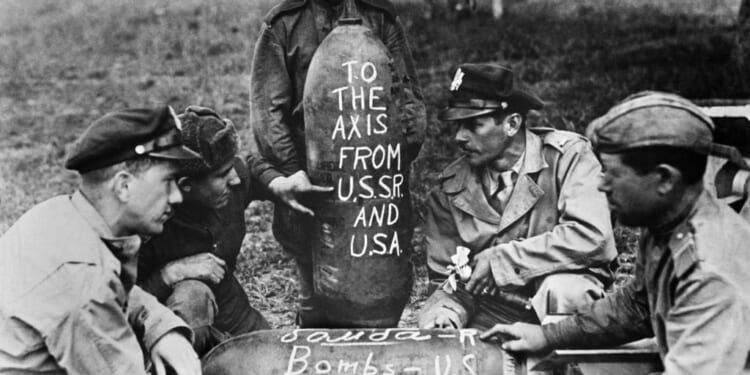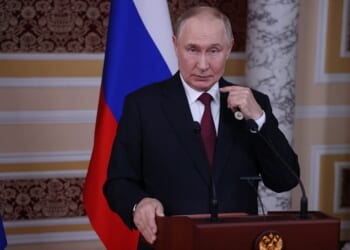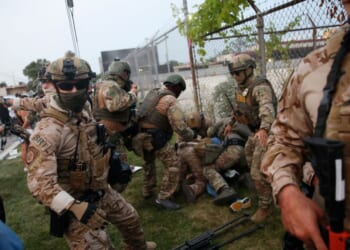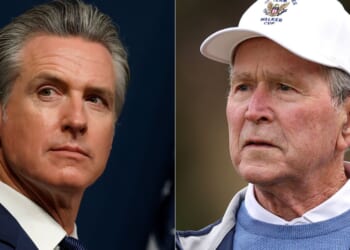Reality, myth, and World War II.
With 2025’s V-E Day and V-J Day anniversaries behind us, the Second World War will soon be 80 years in history’s rearview mirror. Very few veterans of the conflict remain alive. According to records in the National World War II Museum, as of the last survey in 2024, only 66,143 soldiers were still with us—less than 1% of the Americans who served.
True, many institutions that emerged out of the war to form the architecture of postwar international relations endure, from the International Monetary Fund (IMF) and World Bank created at Bretton Woods in July 1944, to the United Nations born at Yalta in February 1945. But their relevance recedes further every year. When was the last time anyone paid attention to a U.N. Security Council resolution, much less one from its General Assembly? Even the International Monetary Fund and World Bank, which inspired screaming headlines and protests in the 1990s over their interference in the affairs of developing nations, seem today like forgotten relics of a bygone age. Why, then, does this “Good War,” known to most Americans only from Hollywood films, invoke such passion?
One reason is the role such storytelling has played in supporting the polite fictions that have always undergirded the postwar consensus. Only two of the U.N. Security Council’s five permanent members—the U.S. and the Soviet Union—had any real power in the post-1945 world. Postwar Britain was moribund, rationing foodstuffs into the 1950s, reduced to a kind of financial receivership to the United States. This situation precipitated our vaunted “special relationship,” i.e., eight decades of America bullying London. Charles de Gaulle’s France was allowed to pose as a victor, the legacy of Philippe Pétain’s Nazi-collaborationist Vichy regime swept under the rug. China may have power now, but the country was a basket case in 1945, and its Security Council seat was held until 1971 by Chiang Kai-shek’s government, based in Taiwan after it lost its civil war with Mao Zedong’s Communists in 1949. The Chinese Communist Party (CCP) which now holds that seat, unlike Chiang, was not even a belligerent in the war: Stalin’s USSR brokered an agreement with Tokyo in October 1940 whereby Japan and Mao agreed not to attack each other’s forces. Portraying this miscellany of states as the proud legacy of an anti-fascist triumph, rather than as a haphazard product of the war’s catastrophic after-effects, helps uphold the comic book fiction that the U.N. is to international relations what the Avengers are to the Marvel Cinematic Universe.
Still more fantastical are the half-truths which surround the war itself. Perhaps Americans in the 1940s were less naïve than those in 1917 who had believed President Woodrow Wilson’s airy promise that they were entering the fray because “the world must be made safe for democracy.” But they were bombarded with no less overwrought propaganda about an evil fascist “Axis” bent on world domination, told they were fighting for abstractions such as President Franklin D. Roosevelt’s “Four Freedoms,” and sold a whitewashed portrait of their wartime “Ally,” Josef Stalin, as “Uncle Joe.” Some of this wartime propaganda was later jettisoned out of embarrassment, such as the Stalinophilia which came to seem passé, if not downright treasonous, in the early Cold War years. Still, most of us were raised on a diet of dramatizations about democracy standing up to fascism as the righteous Allied armies delivered Europe from the clutches of wicked Hitler and the Holocaust, all while saving China, Southeast Asia, and the Pacific region from Japanese aggression.
The real story of the Second World War is murkier than this, beginning with the U.S.’s role in it. If we fought a war against fascism, then why did we wait until 1941 to do so, 19 years after Benito Mussolini’s fascists came to power in Italy and six years after Italy invaded Abyssinia? If what was really meant was a war against Nazism, then why did we wait until Adolf Hitler had been in power for nearly nine years, five years after he remilitarized the Rhineland, three years after the Anschluss and Munich, two years after he invaded Poland, and nearly a year and a half after Germany invaded Denmark, Norway, France, and the Low Countries? Why, moreover, did we let Hitler declare war on the United States proactively in December 1941, rather than do it the other way around?
As for “armed aggression,” it is rich to say that we went to war to oppose this, when we did not do so in response to multiple such actions by Italy, Germany, and Japan before 1941, not to mention the similarly aggressive behavior between 1939 and 1941 by the Soviet Union—a country we not only did not go to war with, but supported vigorously with Lend-Lease aid and arms shipments even before the U.S. entered the war against Nazi Germany. Stalin’s Communist dictatorship was just as “unfree” as any of the Axis powers, indeed far more oppressive and murderous vis-à-vis its own subjects. By December 1941 it had invaded nearly as many countries as Nazi Germany and more than either Italy or Japan had done. If the “Good War” was a crusade for democracy or against armed aggression, why did we not go to war with the USSR?
Read the rest here.
The American Mind presents a range of perspectives. Views are writers’ own and do not necessarily represent those of The Claremont Institute.
The American Mind is a publication of the Claremont Institute, a non-profit 501(c)(3) organization, dedicated to restoring the principles of the American Founding to their rightful, preeminent authority in our national life. Interested in supporting our work? Gifts to the Claremont Institute are tax-deductible.

















